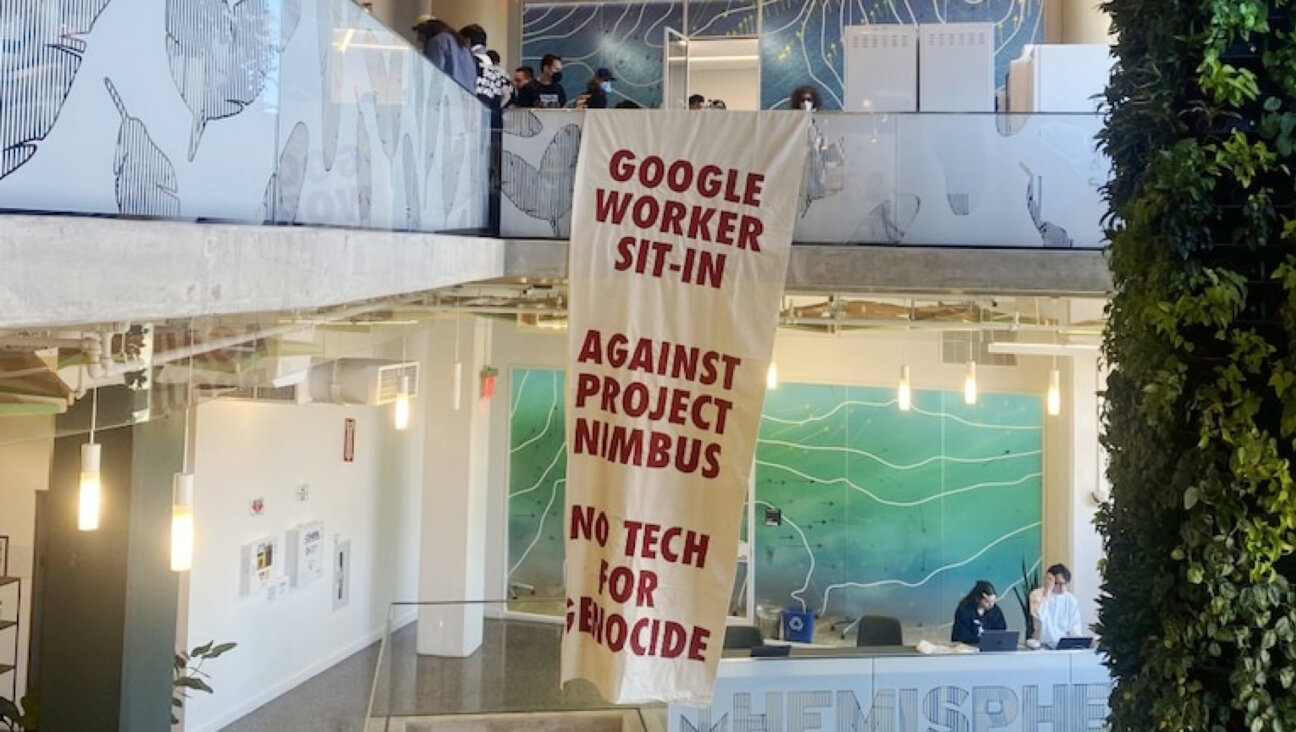Stanley Kaplan: Education Pioneer

Brainiac: New York Senator Charles Schumer, above, once worked for Stanley H. Kaplan. Image by Karen Leon
REMEMBERING STANLEY H. KAPLAN, THE MAN WHO HELPED MILLIONS SUCCEED
Among the family members and friends paying their respects by sitting shiva at the Kaplan home following the funeral of Stanley H. Kaplan, a pioneer in SAT test preparation who died August 23 at age 90, was New York Senator Charles Schumer. Pointing to a framed photograph of her late husband and her late son, Paul, who died at 36 of AIDS, a devastated yet smiling Rita Kaplan grasped my hand. We reminisced about past “Stanley” moments, including her bringing him home to meet her father. “Stanley convinced him that though he was a tutor, he could support me,” she said. Across from us sat Schumer, who later confided: “At 14, I worked for Stanley, running a mimeograph machine…. My nickname was ‘Four 800s’ [for acing SAT tests], but don’t quote me!” There was no need for modesty. Stanley Kaplan “outed” him in his autobiography, “Test Pilot: How I Broke Testing Barriers for Millions of Students and Caused a Sonic Boom in the Business of Education” (Simon & Schuster, 2001) which he wrote with Anne Farris). Kaplan noted, “I should have known then that he would aspire to high office, because he would read the material as it came off the copy machine to check to see whether I had made any mistakes.” In his testimonial blurb on the book’s back page, Robert F. Kennedy Jr. states: “Kaplan’s courses are America’s favorite remedy against exam-day jitters. Stanley Kaplan has been the best friend to millions of American students including several generations of Kennedys.”

Brainiac: New York Senator Charles Schumer, above, once worked for Stanley H. Kaplan. Image by Karen Leon
After the sale of the Stanley H. Kaplan Educational Centers to The Washington Post Company in December 1984, the Kaplans established the Rita J. and Stanley H. Kaplan Family Foundation to support programs in education, health, the arts and Jewish causes. Rita once told me, “We are beleaguered by requests for funding, and it is always a difficult choice,” but, she insisted “we always make sure that at least half goes to Jewish causes and programs.” Beneficiaries of the Kaplans’ philanthropy include the Solomon Schechter School in New York, the Rashi School in Boston, New York’s Sutton Place Synagogue and Ben Gurion University of the Negev.
At a September 25, 2000, reception for Jerusalem Open House, the first community center open to Israel’s Christian, Muslim and Jewish gay men and lesbians, Kennedy touted the Kaplans and declared, “I live in danger of diffusing my energies by getting involved in too many things… but bigotry is bigotry, and I don’t differentiate between civil rights and the battle for equality.” He then posed for photographs with Mathilde Krim, co-founder of the American Foundation for AIDS Research, and Rita Kaplan. That night, the Kaplans presented a $10,000 donation to the Community House in memory of their son. They also contributed to God’s Love We Deliver.Martha Selig, who died in 2006 at age 93 and was the first executive director of community services at the Federation of Jewish Philanthropies (now UJA-Federation of New York) and a Kaplan friend and mentor, prompted the Kaplans’ first philanthropic gift: the Rita and Stanley H. Kaplan Cancer Center at New York University Medical Center, followed by Brooklyn’s Kaplan Center for Community Services. I’m not sure if it was at an October 2001 book launch party hosted by then Kaplan, Inc. president and CEO Jonathan Grayer or at another Kaplan philanthropic event that Rita made an entrance dressed in a black-leather, body-hugging pants outfit. “You look like a biker!” I said to her. Never at a loss for a sharp repartee, she replied, “Biker, shmiker!”
REMEMBERING SENATOR SCHUMER AT A POST-9/11 MOMENT
Seeing Schumer at the Kaplan apartment, in the shadow of the United Nations, reminded me of our September 16, 2001, encounter outside New York City’s 69th Regiment Armory five days after the attack on the World Trade Center’s Twin Towers. My daughter Karen and I joined several hundred New Yorkers and out-of-towners gathered outside the armory at East 26th Street and Lexington Avenue as relatives and friends of the World Trade Center victims brought identification information and DNA samples. To reach the armory, one had to pass block after block of walls, phone booths, windows, mailboxes and lamp posts that were covered with photos of, and messages about, lost loved ones. Across the street, I spotted reporters and TV crews. “Chuck Schumer is here!” ran through the crowd. Schumer launched into a passionate address: “We must wipe out this source of terrorism!” He warned that if action is not taken immediately, “In two, three years, when ‘they’ come back, it won’t be 6,000 but 6 million!” Describing the surrounding walls of photos as being “as powerful as the Vietnam Memorial in Washington,” Schumer expressed the hope that “the walls be kept as is.” Two months later, in “One Week in September,” the November 2001 Vanity Fair Special Edition, amid a montage of 9/11 Ground Zero rescuers and workers, is a photo of Schumer. The caption under the photo reads: “Five days into the ordeal, Schumer addressed the press outside New York City’s 69th Regiment Armory. After President Bush agreed to provide $20 billion in aid for New York, Schumer remarked, ‘I wanted to hug him, but he’s the president.’”
HONEST MARK GREEN STUCK WITH “TWO BITS” NO ONE WANTED
Got a kick out of the September 6 New York Post Page Six item about City Councilman Bill de Blasio “cheating the city out of a [parking meter] quarter.” The item goes on to cite Mark Green, who in 1994, as public advocate, “got 13 parking tickets outside City Hall,” a charge, the item noted, that was disputed by his then office. Green, currently running [again] for public advocate, would no doubt have preferred that Page Six tout his 1995 “honest Mark” moment at the National Committee for Labor Israel dinner at the Hilton honoring then New York City mayor David Dinkins. Spotting a quarter on the hotel’s multi-patterned carpeting, Green asked me if it was mine. “No,” I said. He picked up the coin and, holding it aloft, asked all buffet table passersby, “Whose is this?” Ruth Westheimer raced by, hands raised in the air: “Not mine! Not mine!” H. Carl McCall (then New York State comptroller); Jerry Goodman, executive director of the National Committee for Labor Israel, and Jay Mazur, then president of the International Ladies Garment Workers Union, declined ownership. Dispirited, Green turned to Wilhelmina “Billie” Holiday, deputy commissioner of the Mount Vernon Police Department, and handed her the coin, with the directive: “Here! You keep it. This won’t look good for me.”

I hope you appreciated this article. Before you go, I’d like to ask you to please support the Forward’s award-winning journalism this Passover.
In this age of misinformation, our work is needed like never before. We report on the news that matters most to American Jews, driven by truth, not ideology.
At a time when newsrooms are closing or cutting back, the Forward has removed its paywall. That means for the first time in our 126-year history, Forward journalism is free to everyone, everywhere. With an ongoing war, rising antisemitism, and a flood of disinformation that may affect the upcoming election, we believe that free and open access to Jewish journalism is imperative.
Readers like you make it all possible. Right now, we’re in the middle of our Passover Pledge Drive and we need 500 people to step up and make a gift to sustain our trustworthy, independent journalism.
Make a gift of any size and become a Forward member today. You’ll support our mission to tell the American Jewish story fully and fairly.
— Rachel Fishman Feddersen, Publisher and CEO
Join our mission to tell the Jewish story fully and fairly.
Our Goal: 500 gifts during our Passover Pledge Drive!























